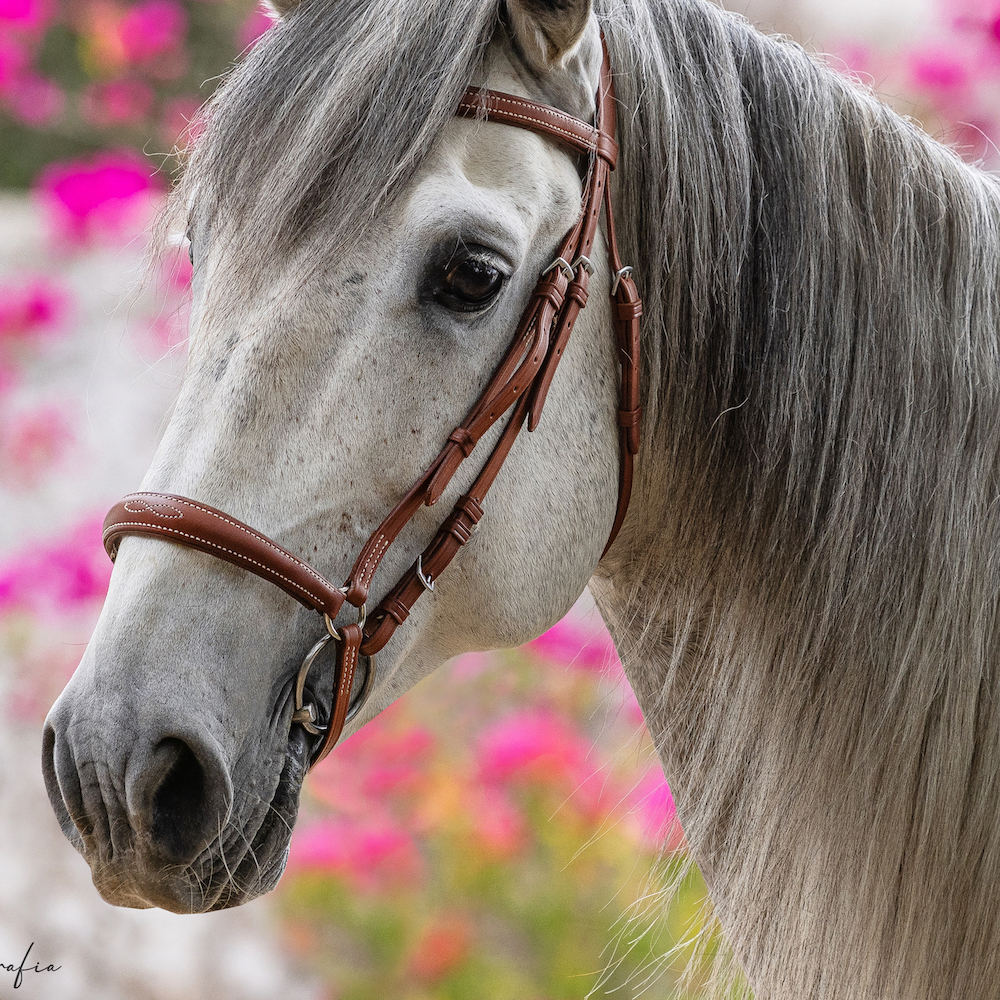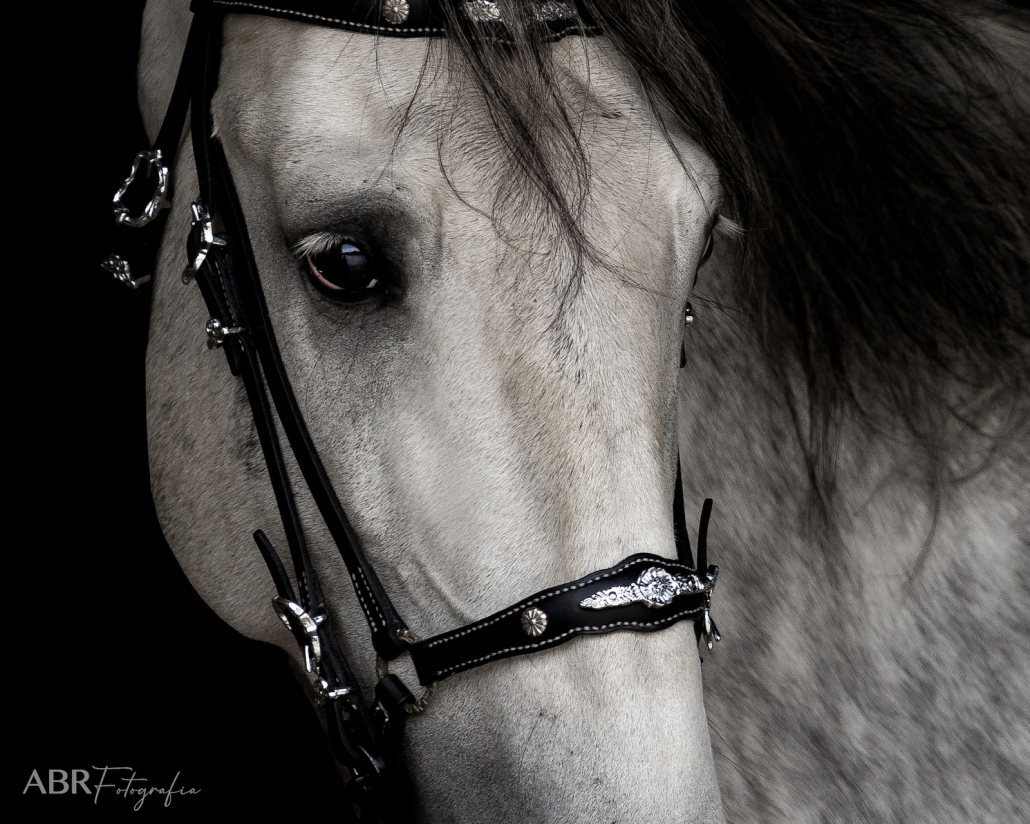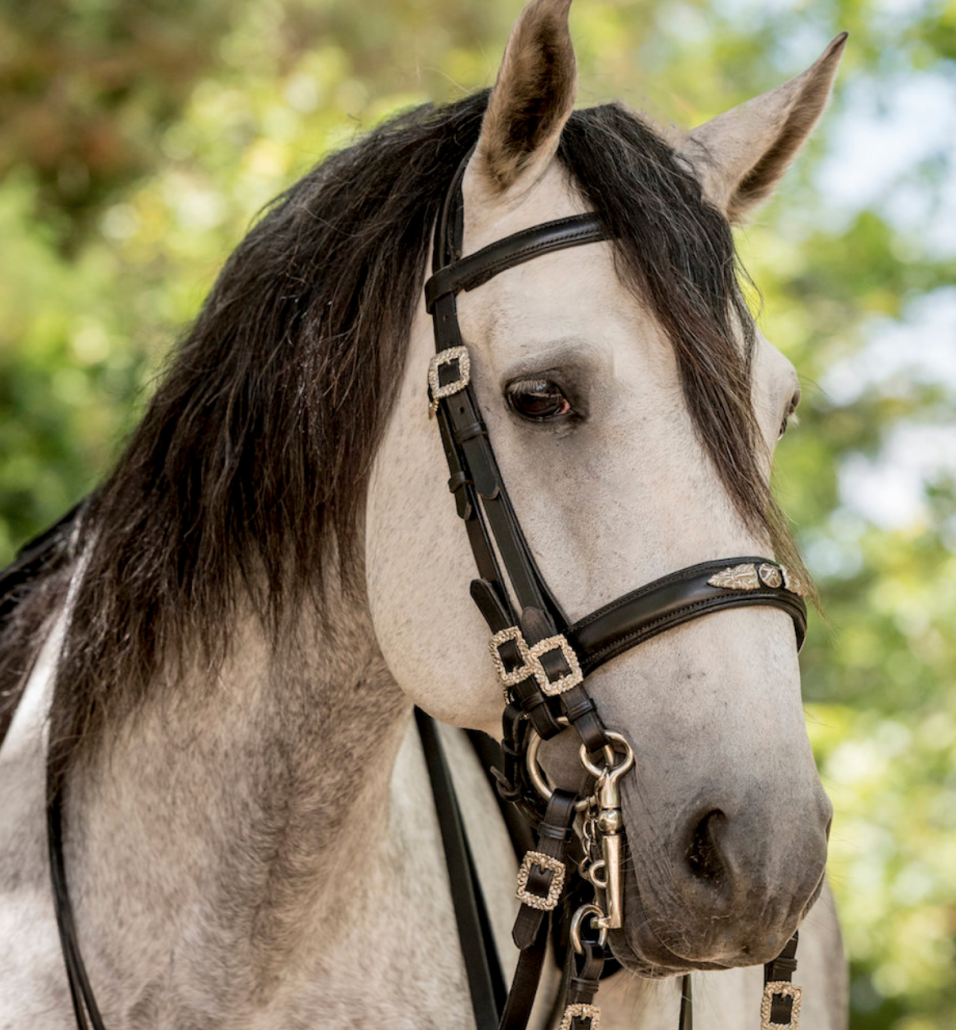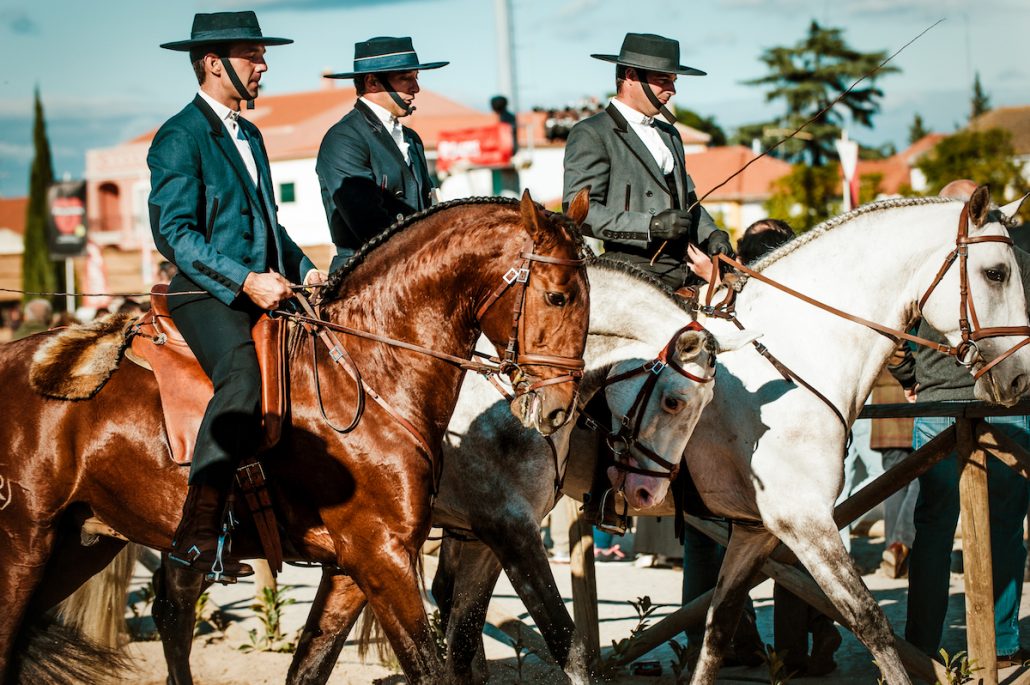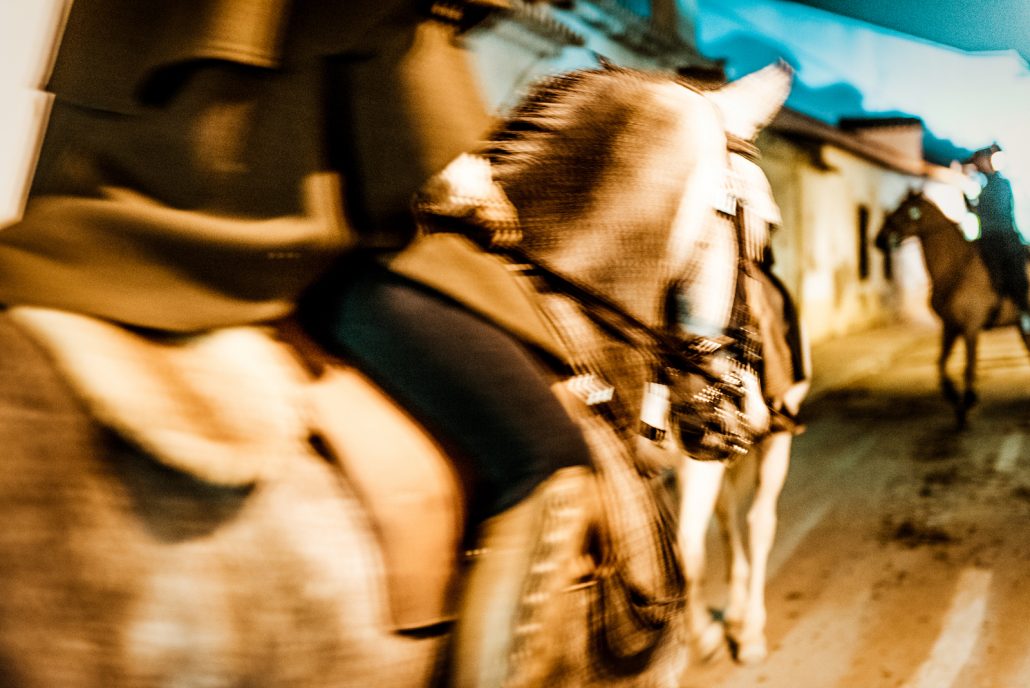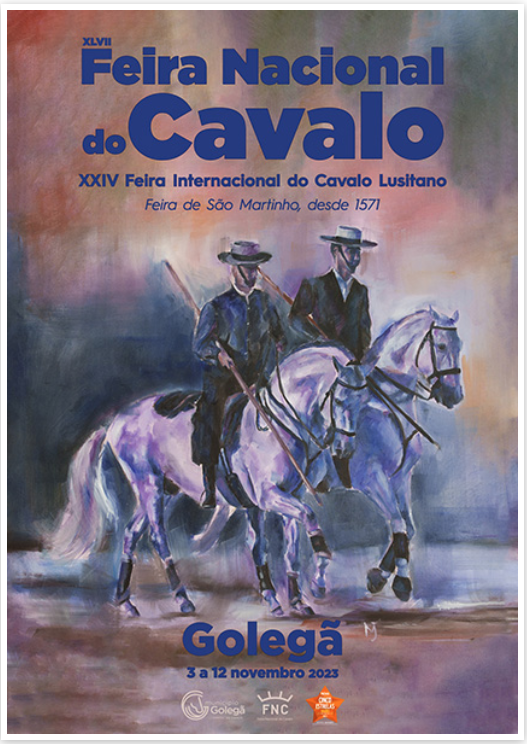Article written by Teresa Burton
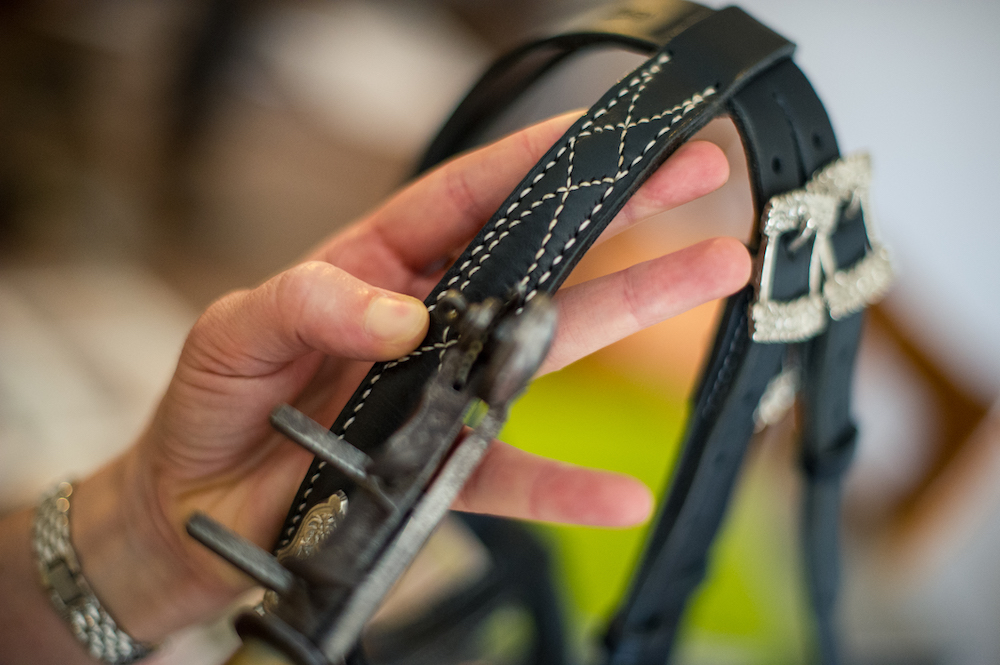
Image by Lena Saugen – Hand stitched bridle placing the metal ornaments
The saddle craftsman takes great care with every stitch, responding to the
subtle variations in the leather.
It’s a meditative act in a world that no longer values such things. Hand sewing sacrifices speed for the sake of quality. It is time-consuming, that’s part of its charm.
Sadly, with the modern desire to have everything immediately, handmade saddlery is becoming harder to find. There are very few people now that can make a living in this heritage art and sadly even less interested to learn the trade.
The hand maker is a passionate soul who creates every piece right from the moment he or she chooses the materials, cuts the shapes and lovingly hand stitches each piece. This takes time and so limits the maker to how many products they can produce in a month. They need to be fairly rewarded for the beautiful and meticulous work they do.
Those that are prepared to wait and can afford the products are in for a treat, you will own a piece of functional art.
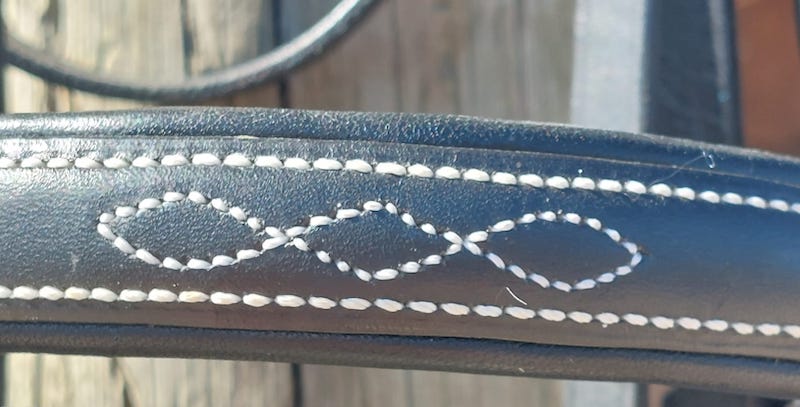
Image by Teresa Burton – Hand saddle stitched brow band.
What makes Hand Stitching special?
Hand stitching compared to machine stitches is very different. Hand stitching is generally much stronger. In fact the leather is more likely to give way sooner than the stitching. Why? Because when you use a machine, that line of stitching requires two separate threads that lock around each other in what is known as a “locking stitch”. Whereas, a hand-stitched line uses a single thread with needles on either end. The thread runs back and forth on either side of the leather in what is called a “saddle stitch” .
The saddle stitch seam is considered an indestructible seam
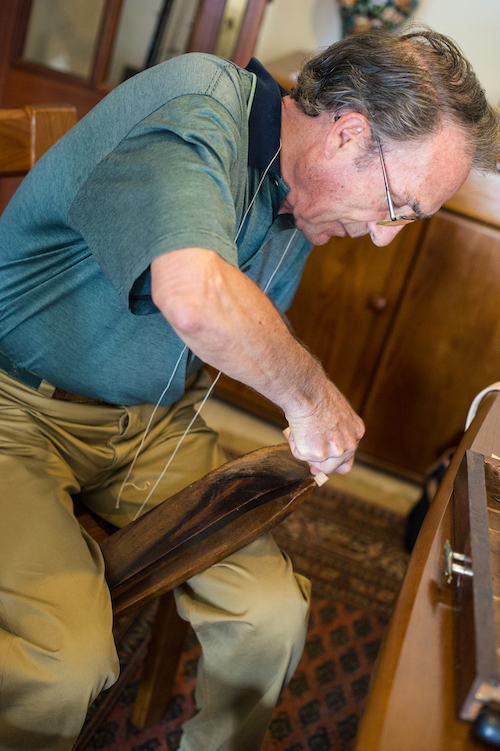
Image by Lena Saugen – Jose de Sousa grandson of the famous Jose Victorino
This seam was designed more than a century ago by craftsmen saddlers and harnessers to make coupling parts for working horses – saddle, equestrian, horse-drawn carriages etc. Also the parts of leather heavily subjected to wear (handles, belts, etc.). They used it to stitch luxury leather goods such as luggage.
Goyard, Dior, Hermes, Chanel or Louis Vuitton valued hand-stitching and thats why their products have premium prices. Understanding the difference in the stitching is what makes it easy to recognise fake articles. However, sadly today even in these French luxury houses 99% of the stitching is done by machines.
If a thread were to snap on a piece that sewn on a sewing machine, the entire line of thread could potentially unravel allowing the two pieces of leather to separate. However, in a hand-stitched item, the thread will not unravel and the leather pieces will not separate from each other. More importantly, it’s easier to repair the line of stitching.
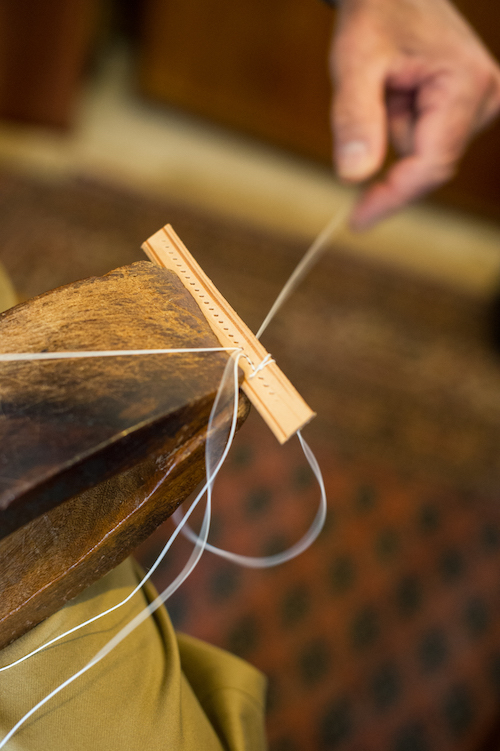
Image by Lena Saugen – The saddle stitch method
How to recognise the differences
It is important to recognise that craftmen and artists can also work their magic with sewing machines and this is certainly not about belittling the sewing machine. I am simply casting some light on a craft that is losing traction in the modern world.
The main aesthetic differences to recognize are:
- The reverse side, is less “beautiful” on a machine seam.
The regularity of the machine against the charm of a handmade product.
The direction of inclination of the thread on the face and the reverse.
- On the machine-seamed side: the inclination goes upwards
- On the hand-seamed side: the inclination is downwards
In hand stitching the maker can use a larger thread thickness and for really wide threads the holes are punched and they can achieve or more rugged look if required. Some leather crafters use smaller holes on their chisels or pierce the leather using an awl, then use a much finer thread to give their items a more sophisticated look.
The method and tools
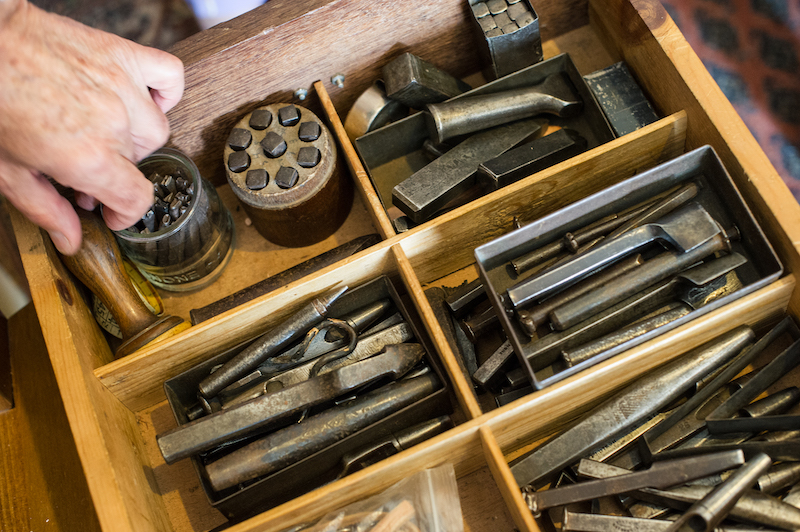
Image by Lena Saugen – Vintage tools for leather work over 100 years old and still in use-
Hand stitching saddle stitch (and tied saddle stitch) must be strong, flexible, waterproof and pretty because it is a decorative element in its own right. The sewing is done by hand without mechanized means. The tools are rudimentary, many over 100 years old, and require perfect mastery.
Each tool is a work of art in its own right and bares the loving wear of countless hours working the leather peices in the craftmans hands. A craftman´s tool kit consists of :
- A sewing clip (to hold the piece and leave your hands free)
A wheel or claw to strike (to mark the location of each point)
An awl (tool for perforating leather)
A linen thread
Beeswax
Two needles
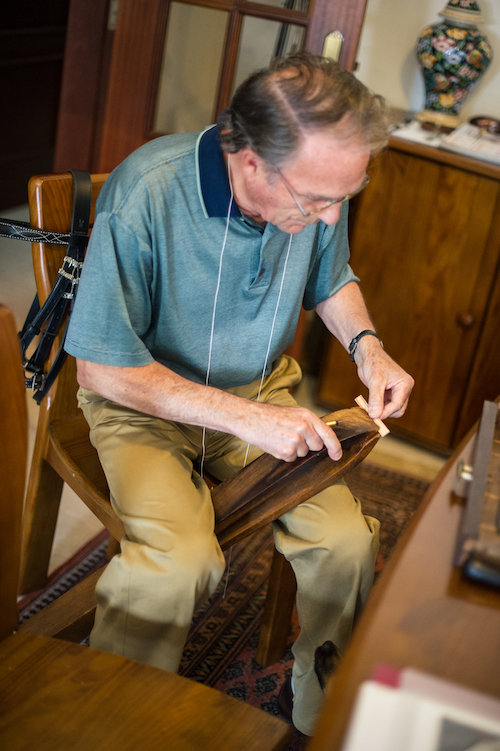
Image by Lena Saugen – Jose de Sousa
The particularity of the saddle stitch is to sew with a thread and two needles. In order to be able to use both hands for holding the two needles, and the awl to pierce the leather, the piece is held in a wooden sewing clip, wedged between the legs.

Image by Lena Saugen – Hand Making Tools for Saddlery
Saddle Stitching and Machine Stitching both have their place.
Saddle stitching without a doubt makes for a more durable, long-lasting product. The question is whether or not an item requires that level of durability or if corners can be cut to lower the overall cost of the item.
There is a market for both and beautiful products are produced with either method. It is cheaper to produce products that are machine stitched so making it more affordable for many comsumers. However if you can find your way to owning one hand stitch item you will be owning a piece of art.
OUR MISSION
We are utterly enthusiastic about Equestrian Heritage . Sadly in Portugal there are barely any hand stitchers left to produce beautiful bridles, saddles and halters. We have made it our mission is to support and promote Portuguese Artisans and heritage items.
We are very previlaged to be working with some true artists, you will find their work in our online shop.
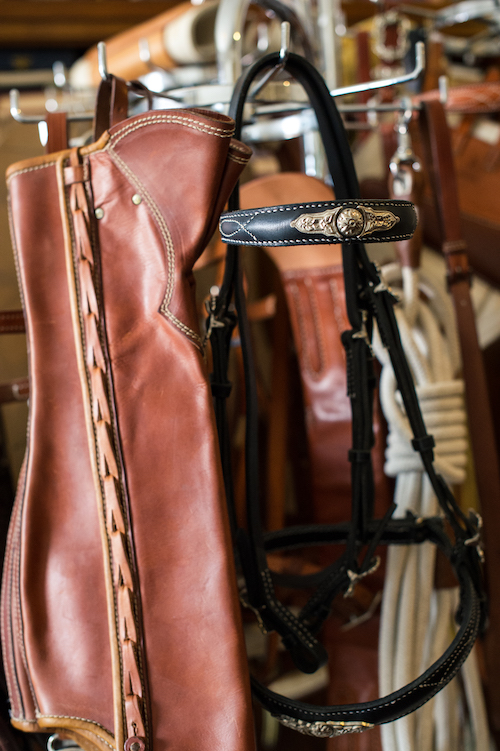
Feel free to contact us if you have any special requests.
Images by Lena Saugen Photography, Teresa Burton and Christophe Taniere
Text by Teresa Burton
